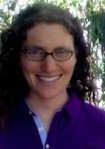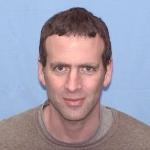About Julia 
Julia Salzman is an Assistant Professor of Biochemistry at the Stanford University School of Medicine and Associate Member of the Stanford Cancer Institute. She received an A. B. in Mathematics magna cum laude from Princeton University and her Ph. D. in Statistics from Stanford University. Dr. Salzman spent one year on the Faculty in the Department of Statistics at Columbia University before returning to Stanford as a Postdoctoral research fellow in the laboratory of Dr. Patrick O. Brown and subsequently joining the faculty at Stanford. She has published broadly in fields including quantum information theory, statistical methodology,
computational biology and genetics. Her most significant contributions have been to show that circular RNA is a previously overlooked but ubiquitous component of eukaryotic gene expression programs. Dr. Salzman’s work has been funded by grants from the Division of Mathematical Sciences at the NSF and a K99/R00 award from the NCI. She is a 2014 Alfred P. Sloan Fellow.
The Salzman lab combines biochemical, genetic, algorithmic and statistical approaches to study RNA expression. Our goal is to use high throughput experimental and statistical tools to construct a high dimensional picture of gene regulation, including cis and trans control of the full repertoire of RNAs expressed by cells. Currently, we are focusing on the function and biogenesis of circular RNA, which we recently discovered to be a ubiquitous and uncharacterized component of eukaryotic gene expression. A second major focus is gene expression variation in human cancer. Here, we combine mining massive public datasets, and experimental study of primary tumors and cell lines with bioinformatic and statistical methods. We use the cancer genome as window into functional roles played by RNA, and are attempting to characterize potential biomarkers.
Talk: Circular RNA is expressed across 1 billion years of evolution
Until recently, circular RNA isoforms expressed from protein coding loci have largely gone unnoticed. Yet, these topologically circular molecules are expressed from a large fraction of human, mouse and fly genes. Since our initial report of widespread RNA circles in humans and mouse, constituting the dominant isoform in hundreds of genes, abundant circular RNAs have been reported in zebrafish, C. elegans and fruit flies; and other groups have confirmed our findings in human and mouse cells. Recently, we have discovered that circular RNAs are expressed in diverse species whose most recent common ancestor existed more than one billion years ago including fungi, a plant and protists. Some of these species have very short introns (~100 nucleotides or shorter) and few documented examples of exon skipping, yet they still produce circular RNAs, making it unlikely that all circular RNAs are by-products of alternative splicing or “piggyback” on signals used in alternative RNA processing. Furthermore, these results indicate that circular RNA may be an ancient, conserved feature of eukaryotic gene expression programs.
Wednesday March 5th, 2014
1:00 PM Lunch
1:15 PM Seminar
Location: Clark Center S360


